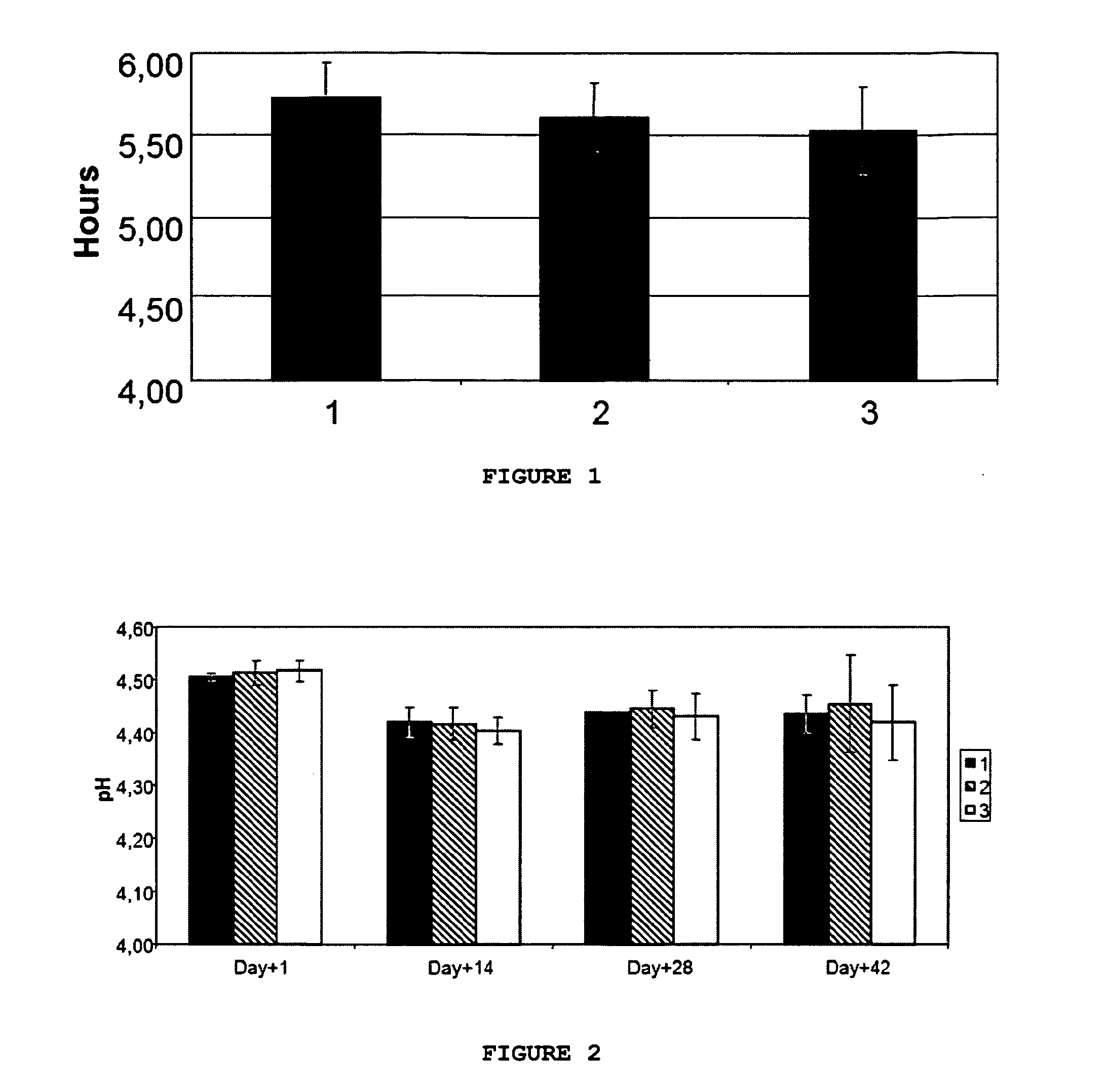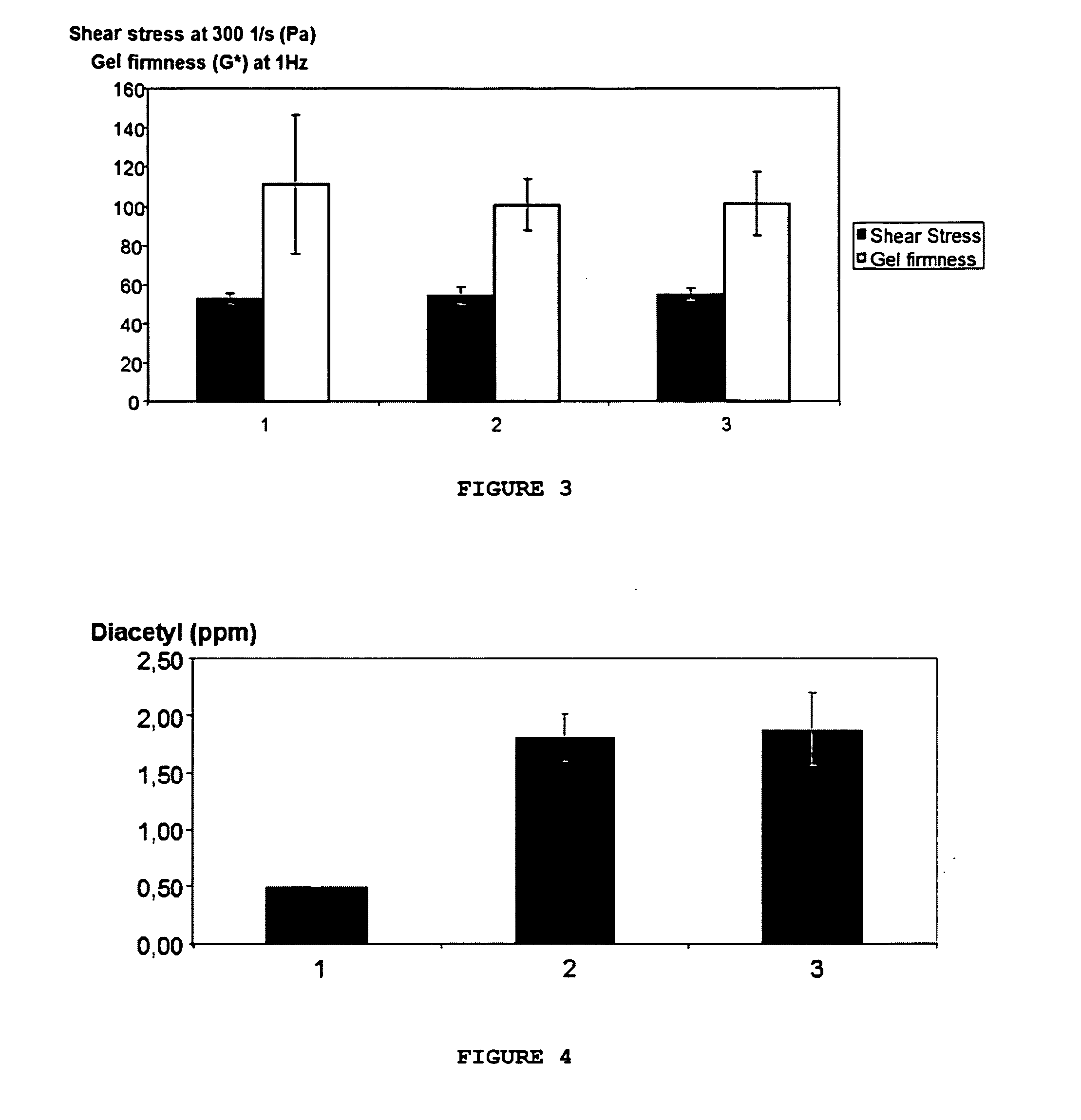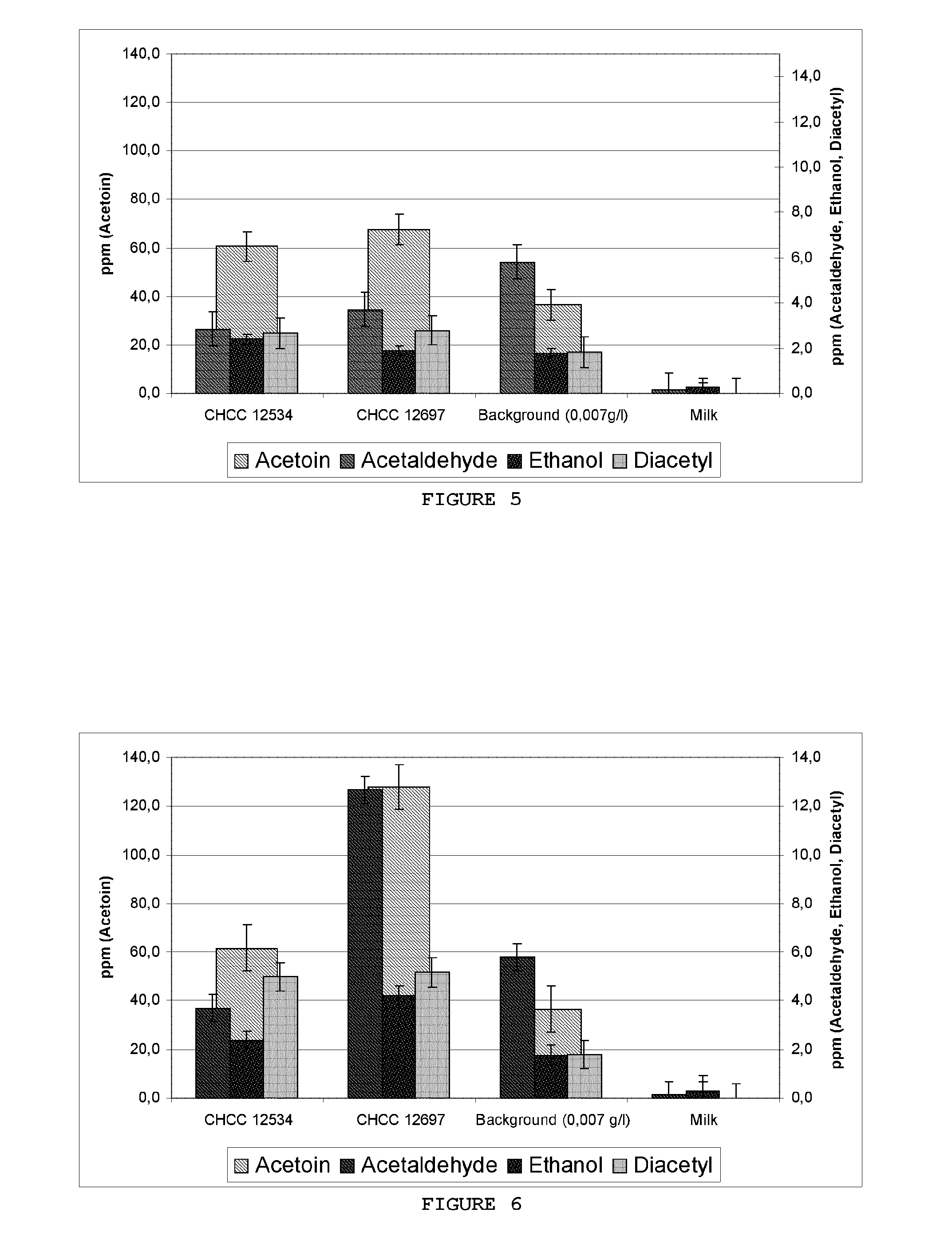Flavor-enhancing lactobacillus rhamnosus
a technology of lactobacillus and rhamnosus, which is applied in the field of flavor enhancement of lactobacillus rhamnosus, can solve the problems of high cost, low fat dairy products often experience a lack of creamy flavor, and the preparation, concentration and addition of diacetyl and/or acetoin to food products are connected with substantial costs. achieve the effect of enhancing the creamy flavor of dairy products
- Summary
- Abstract
- Description
- Claims
- Application Information
AI Technical Summary
Benefits of technology
Problems solved by technology
Method used
Image
Examples
example 1
Screening for Thermophilic Lactobacillus spp. with High Acetoin Levels in Acidified Boiled-Milk
[0086]A selection of 176 Lactobacillus sp. strains was examined for ability to acidify boiled-milk at 30° C., 37° C., 40° C. and 43° C. for approximately 24 hours. The acidified boiled milk from 37° C. incubations were examined directly after fermentation for volatile organic compounds (VOC) by means of head space gas chromatography as described in Example 5. A strain, named CHCC12697, was found to produce high levels of acetoin (135 ppm) and also fairly high levels of acetaldehyde (8 ppm) (data not shown). This strain was observed to acidify boiled-milk at both a mesophilic temperature (30-37° C.) as well as at thermophilic temperatures (40-43° C.). The strain was also observed to grow to high OD in MRS broth supplemented with 2% glucose or 2% lactose or 2% fructose or 2% galactose at 40 and 43 ° C. The strain was not resistant to antibiotics. Partial 16S rRNA gene sequencing showed that ...
example 2
Method for Yoghurt Make
[0087]Skim milk (DanMaelk, Arla) was fortified with 2% skim milk powder (Arta) and heat treated for 20 minutes at 90° C. This solution was inoculated with a background starter culture and with or not the Lactobacillus rhamnosus CHCC12697 strain.
[0088]The background starter culture used to make the yoghurt was composed of multiple strains of Streptococcus thermophilus and Lactobacillus bulgaricus in frozen Direct Vat Set (F-DVS) form inoculated at a rate of 0.02%. The Lactobacillus rhamnosus strain, in F-DVS form, was added to the background starter culture in the amounts described in the result section. At inoculation, cell counts were above 1×1010 cfu / g for the Streptococcus thermophilus and Lactobacillus rhamnosus strains and above 1×108 cfu / g for the Lactobacillus bulgaricus strains.
[0089]The inoculated solution was heated to 43° C. and fermented to pH 4.55. Time to reach pH 4.55 is the fermentation time which is shown in FIG. 1. When pH 4.55 was reached, t...
example 3
Method for Measuring the Evolution of pH
[0090]On the day of analysis (after 1, 14, 28 and 42 days of cold storage) one plastic cup containing the yoghurt was taken out of the cold storage and pH was measured using a pH meter (pHM240, MeterLab). Prior to measurements, the pH meter was calibrated (2-point calibration with 7.00 and 4.01 buffers). As the samples, the buffers used for calibration were stored cold. FIG. 2 shows the evolution of pH.
PUM
| Property | Measurement | Unit |
|---|---|---|
| temperature | aaaaa | aaaaa |
| concentrations | aaaaa | aaaaa |
| temperatures | aaaaa | aaaaa |
Abstract
Description
Claims
Application Information
 Login to View More
Login to View More - R&D
- Intellectual Property
- Life Sciences
- Materials
- Tech Scout
- Unparalleled Data Quality
- Higher Quality Content
- 60% Fewer Hallucinations
Browse by: Latest US Patents, China's latest patents, Technical Efficacy Thesaurus, Application Domain, Technology Topic, Popular Technical Reports.
© 2025 PatSnap. All rights reserved.Legal|Privacy policy|Modern Slavery Act Transparency Statement|Sitemap|About US| Contact US: help@patsnap.com



